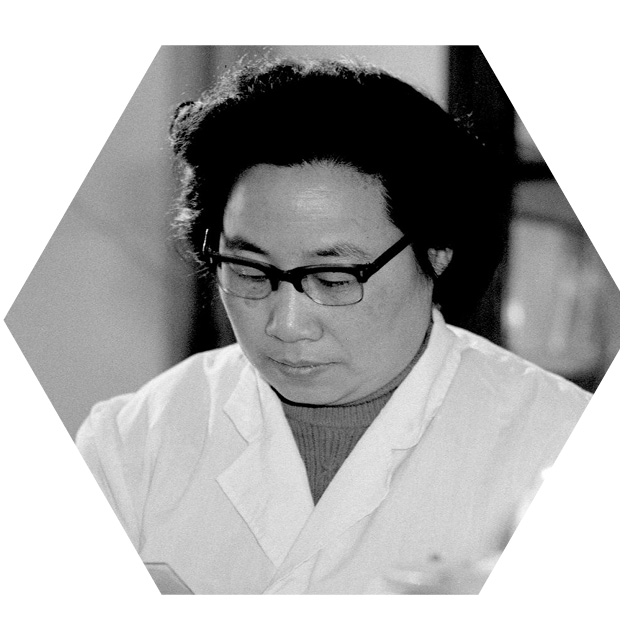Tu Youyou

Tu Youyou (1930 - ) is a Chinese pharmacologist known for her discovery of the antimalarial compound artemisinin, which has saved countless lives around the world. Tu chose to study pharmacology after becoming seriously ill with tuberculosis as a teenager.
After graduating, Tu worked in the Academy of Traditional Chinese Medicine, and in 1969 was appointed head of a team investigating traditional Chinese remedies to find a modern cure for malaria, a pressing concern during the ongoing Vietnam war. The circumstances were challenging – with her husband in a labour camp (due to the cultural revolution at the time) Tu had to leave her small children behind to carry out her research.
Finding a text from 400AD that referred to sweet wormwood (Arteminisn Annua or Qinghao in China) as a treatment for intermittent fevers led Tu to the discovery of artemisinin. The breakthrough came when she modified the conditions used to extract active substances from the plant to use lower temperatures. She tested the active extract on herself before giving it to twenty malaria patients, all of whom recovered.
As a military project, Tu's discovery was kept secret, and only published after the death of Chairman Mao in 1976. Even then, individual authors were not listed on the publications, and when artemisinin was recognised worldwide it wasn’t immediately clear who was responsible for discovering it. Tu’s role was recognised with the Lasker Prize in 2011 and the Nobel Prize for Medicine in 2015. Tu has always been modest about her achievements, commenting that the discovery of artemisinin was “the effort of an entire team”, and accepting the Nobel prize was “for Chinese science and for traditional Chinese medicine”.
Artemisinin, along with its derivatives, has become a cornerstone of modern antimalarial treatment and has saved countless lives, especially in regions where drug-resistant malaria strains have emerged.
“I find Tu’s story fascinating on so many levels – the rediscovery of an ancient remedy that had been overlooked because of the delicate nature of the active substance’s intricate structure, the personal sacrifice she made to pursue a research career as a mother, and the emphasis on teamwork rather than personal glory.” Tess Phillips, Keele University

